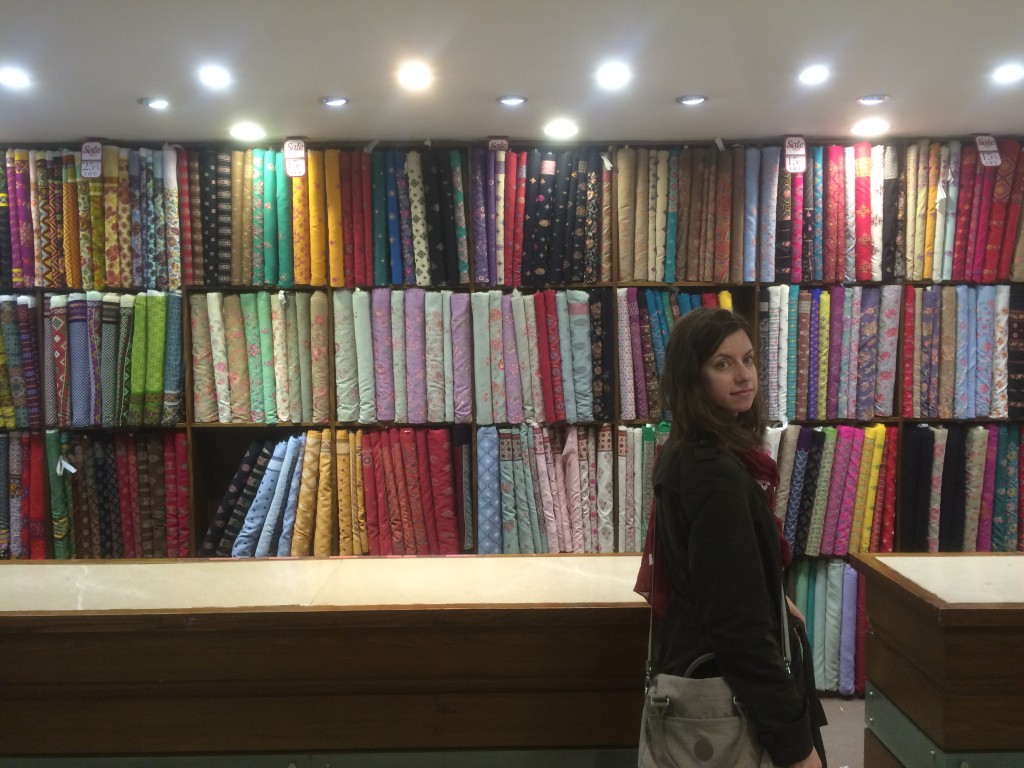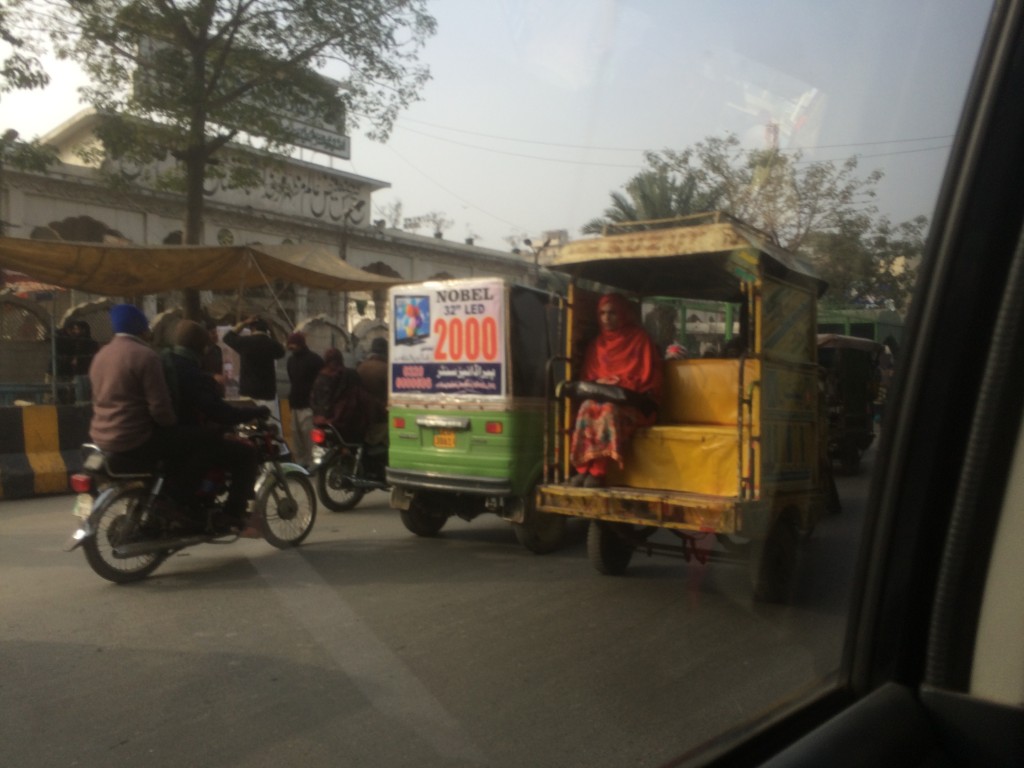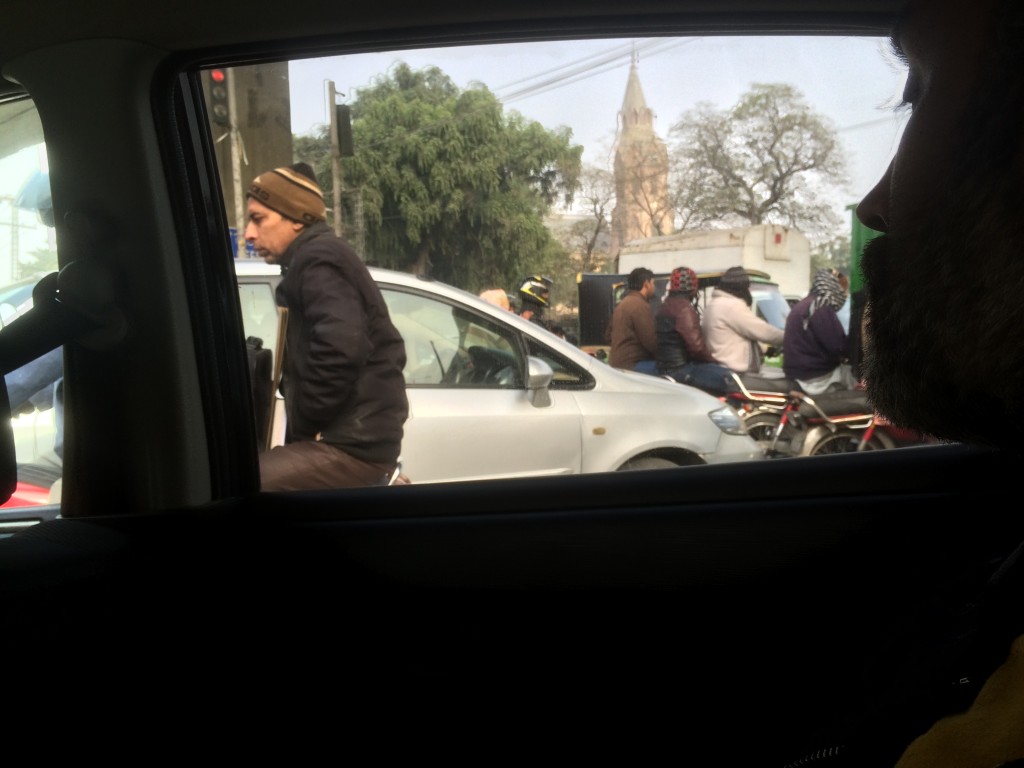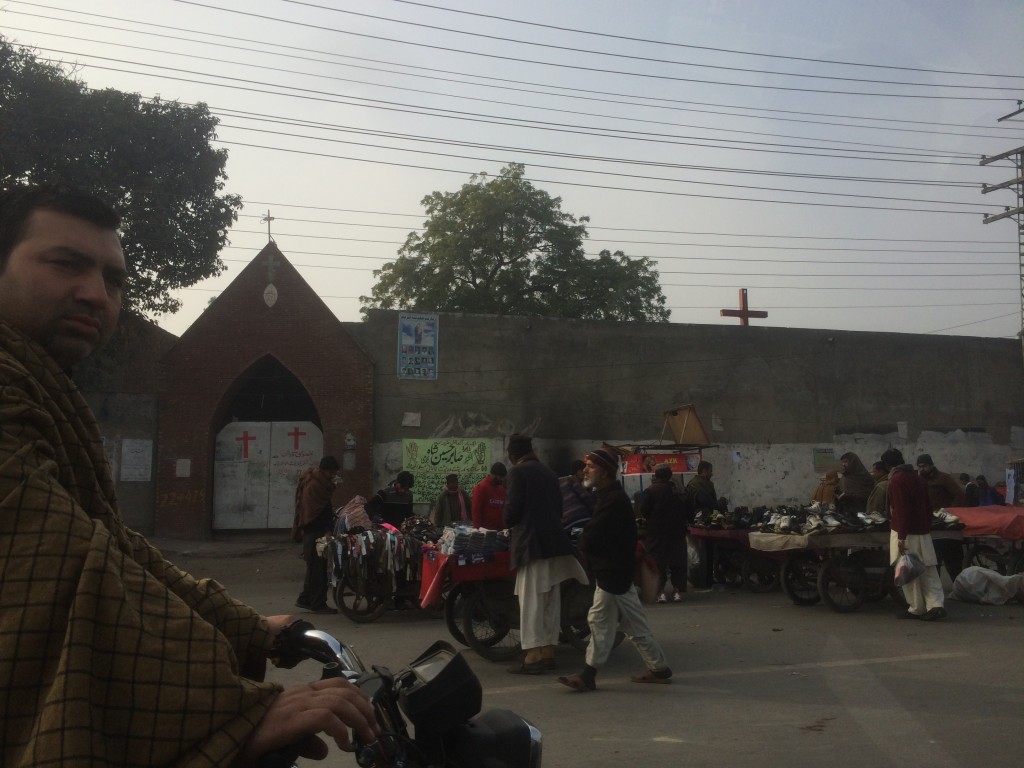Construction began on this outstanding example of Mughal architecture in 1556 under Emperor Akbar (“the Great”) and continued under Jahangir and Shah Jahan. It once sat right on the bank of the Ravi River, whose course has since moved some kilometers away. The Mughals are remembered today for their devotion to the arts, literature, and science, and for the good governance of their large empire. Several aspects of the Lahore Fort seem emblematic of these qualities.
On January 23, 2016 I spent some time at the Lahore Fort with my husband and his sisters. It was one of the high points of my trip to Pakistan, thanks to our tour guide. As we approached the entrance to the fort on foot on the day of our visit, we were talking about how we wanted to hire a tour guide, and we soon came upon Sohail Ashraf, a government-licensed tour guide who lives in the Walled City. For what I considered a cheap fee Sohail took us all around the castle, telling us many things in English.
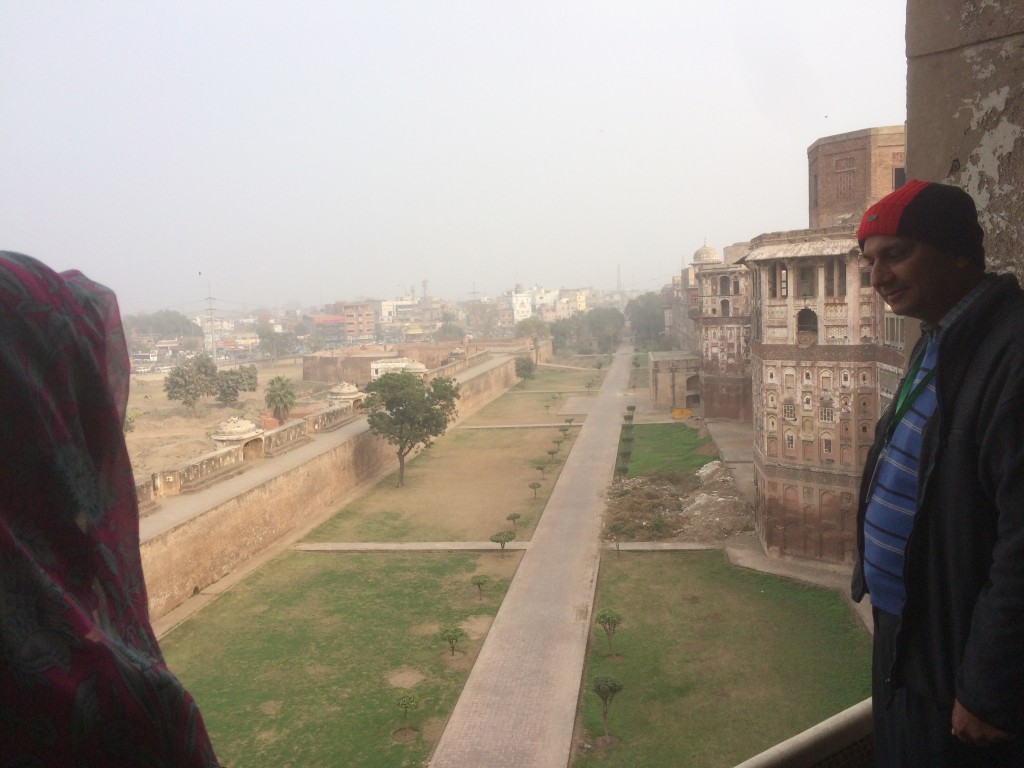
After arranging things with Sohail, we entered like everyone else through the Alamgiri Gate.
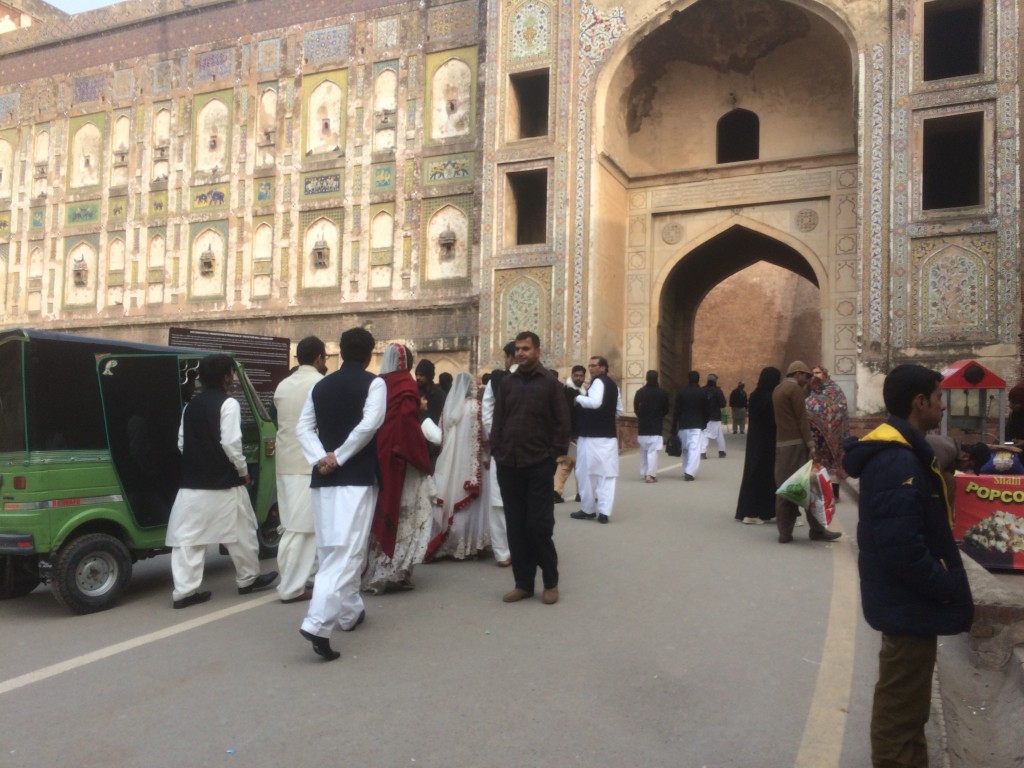
We quickly made our way to the famed Naulakha Pavilion

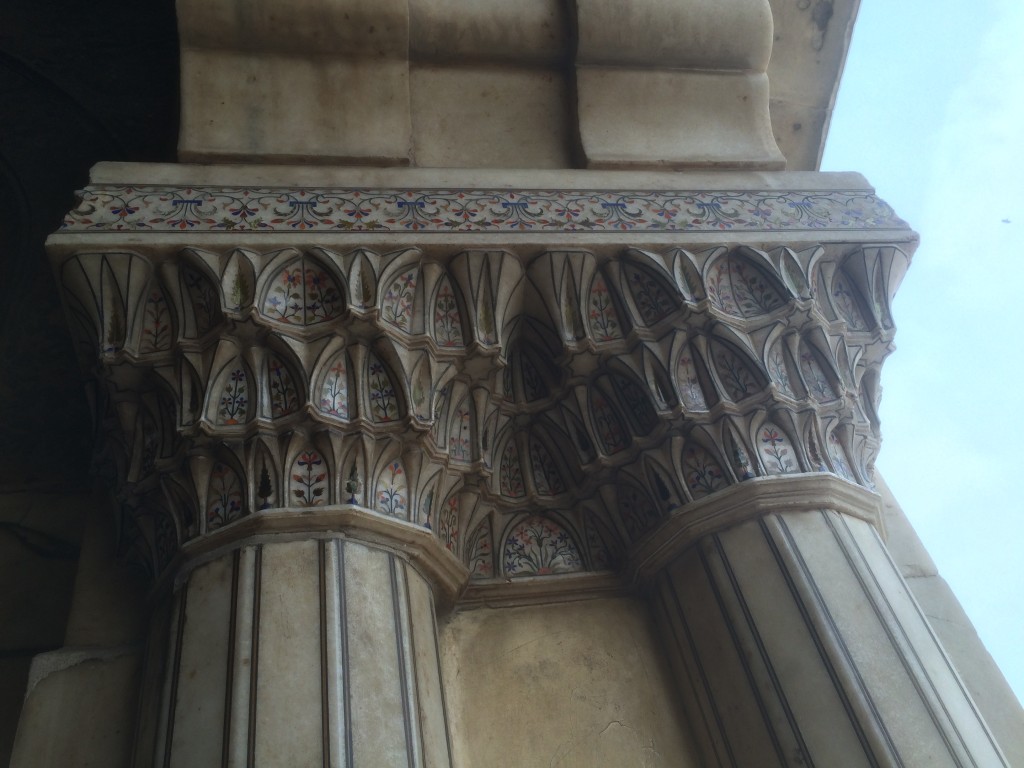
As we moved away from the pavilion, our guide explained that UNESCO wanted to restore some of the frescoes in the fort but that this could never be accomplished because some ultra-conservative religious people would always raise a protest against it. Continuing on this subject, Sohail mentioned that some years ago he had been living as a very devout Muslim but he came to understand that these practices were “obstacles along his path,” so he changed and let go of many of them. Now, he told me, he has more peace and he is still able to be a “good person.”
At another point, Sohail explained the principle behind the restoration of Lahore Fort: parts that are badly damaged are repaired, but if the figures in the fresco or decoration were deemed recognizable, they were left unchanged. If we restored everything, Sohail asked rhetorically, how would we know what the original looked like? It’s quite a different perspective from the notion of historical restoration common in the U.S. and elsewhere, in which a kind of flawless and untroubled image, like a graphic logo, is the goal.

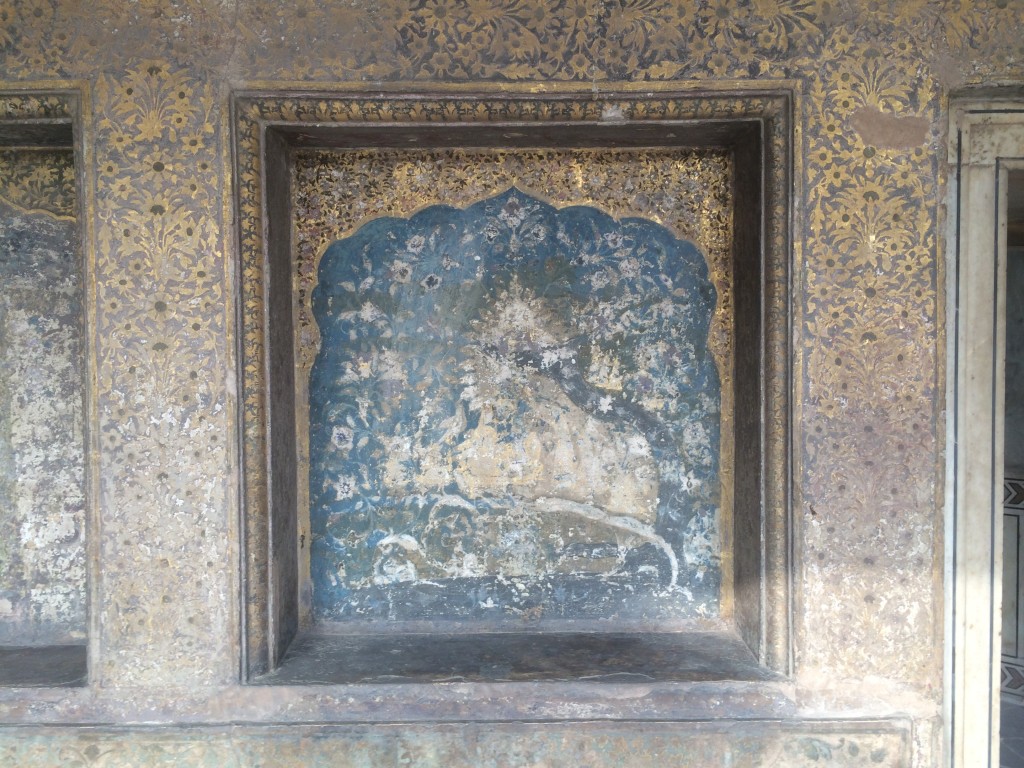
The walls and ceiling of the Sheesh Mahal, another famous section of the fort, are covered in mirror mosaics. Legend has it that Noor Jehan asked her husband Shah Jahan to bring the stars to her. His architects granted her desire to see the stars rise in her own house by making the mirror mosaic tiles on the ceiling curved outward in such a way that when a lantern shone on them, they only reflected one sharp point of light each. We tried to take a picture of this effect, but you can barely see the stars:
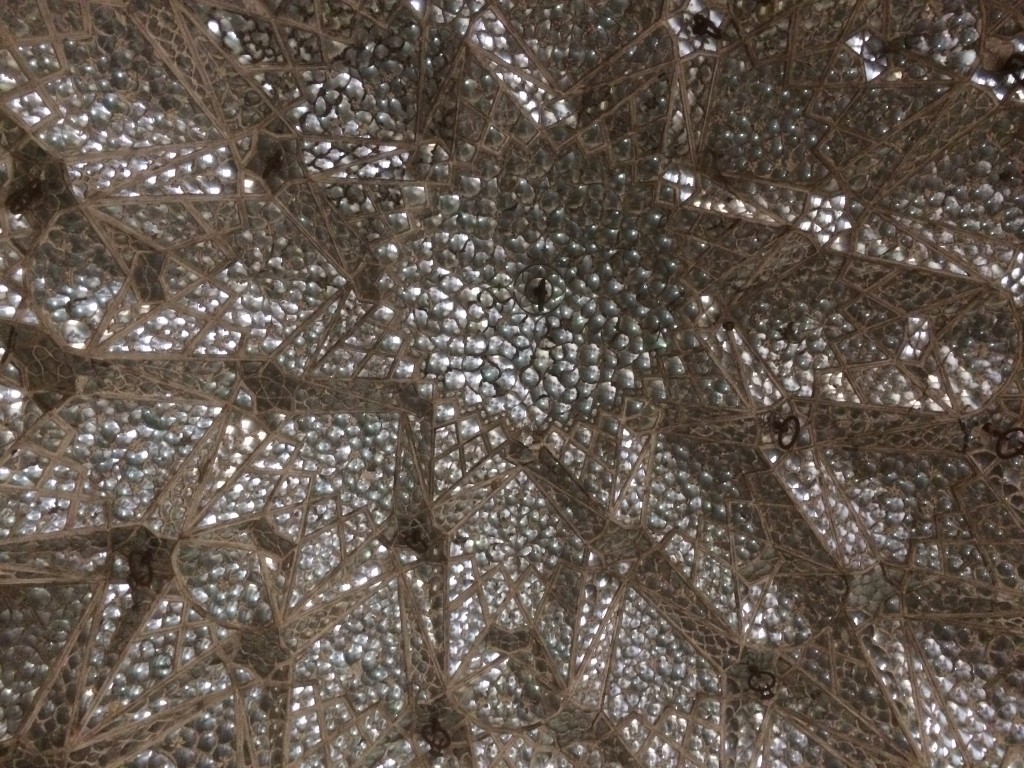
Today the Sheesh Mahal cannot be entered without paying a small entrance fee that Sohail claimed was a deterrent against vandalism. Some visitors used to wander into the famous spot and, probably not even noticing the stars, would adorn the walls in their own way with crude graffiti of their names.
The Diwan-i Khaas (Special Seat) contained the most luxurious rooms for the emperor’s best guests, with a stage surrounded by a fountain in the middle. The closer one came to the presence of the emperor, Sohail informed us, the more beautiful, pleasant, and rich the amenities became.
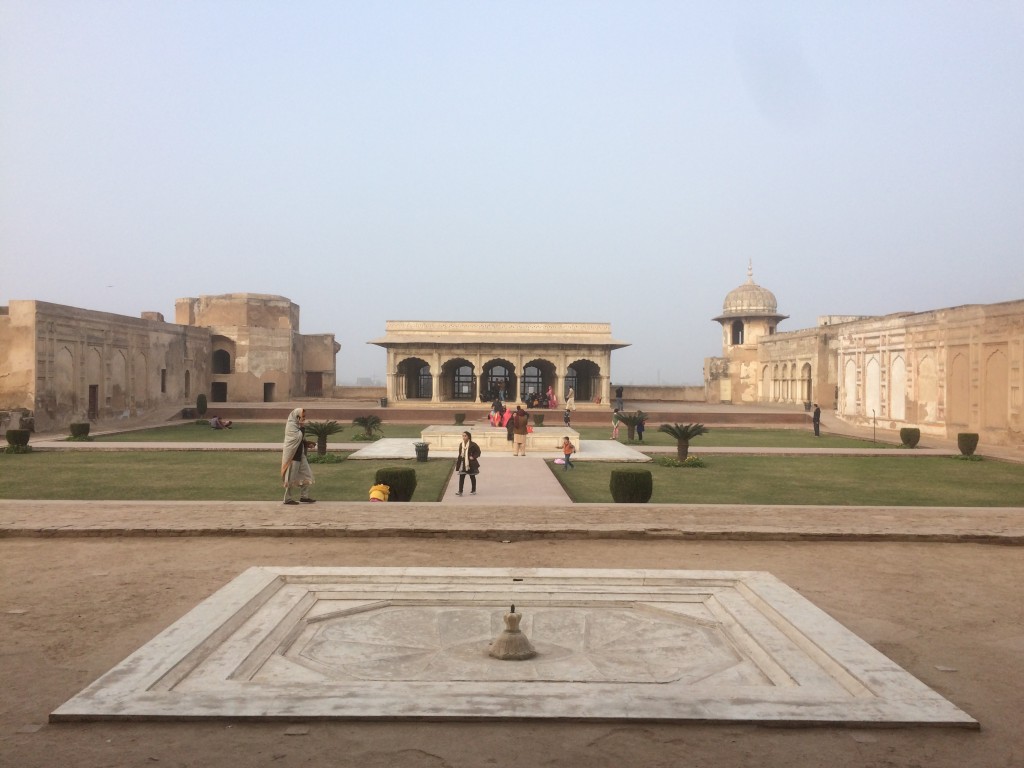
Nearby we saw the Diwan-i Aam (Common Seat), where the rulers would regularly hold court with the common people. Translation had to be made between the common languages and the courtly language of Persian.
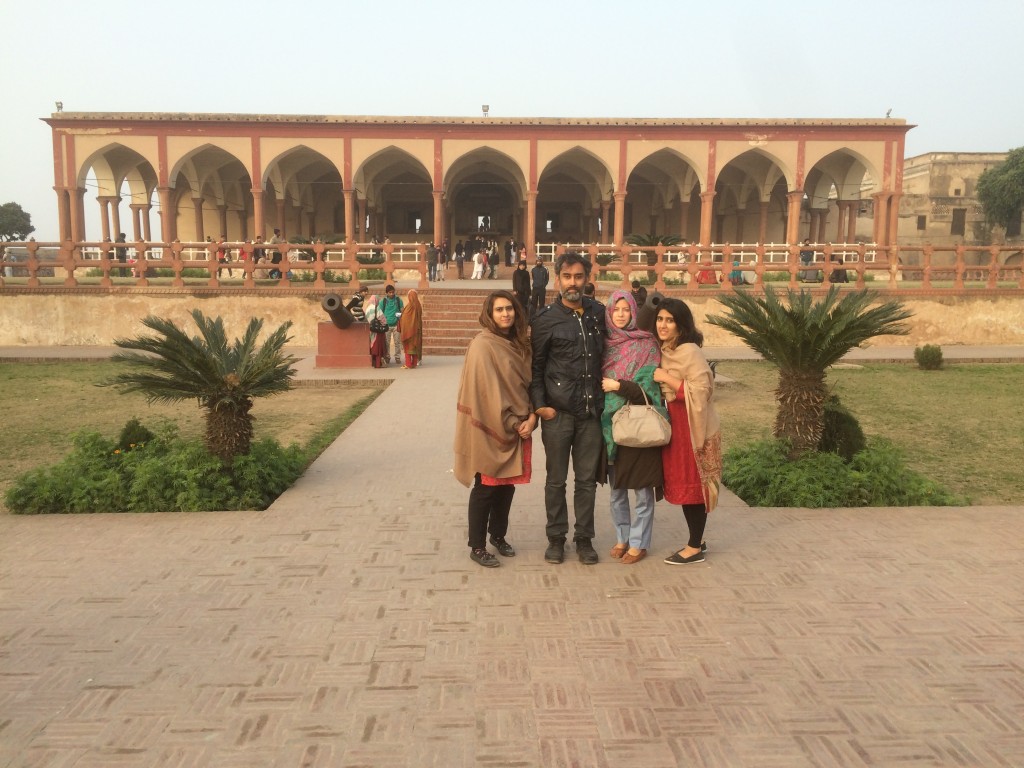
Certainly, the fort served as a military center for the Mughals, as the museum full of military artifacts attests to. Yet, its balanced and pleasing architecture once also encompassed facilities for relaxation and cleansing the body, beautiful visual and performing arts, the diversity of animal life, gardens and fountains, and a point of communication between the emperor and the common people. Since the British colonization and continuing into the Pakistani era, many aspects of the original structure were used for perverse purposes. Gradually, beautiful pieces of this structure were coveted and taken away by British officials (especially the wooden doors and the semi-precious decorative stones), and under both British and the Pakistani rule parts of the fort were re-designated as spaces for the military and the police. For example, the barren area next to the Diwan-i Aam used to be a magnificent zoo, which the British changed into military barracks. The Diwan-i Khaas itself became officers’ quarters. As we were walking out of the Alamgiri Gate my sister-in-law told me that she had heard that quite recently some parts of the fort were used as a secret prison and torture center for dissidents. Indeed, this happened under the dictatorship of Zia ul-Haq (1977-1988).
As we can see in the photos shown above, the Lahore Fort contains several baths and fountains that at one time were full of running water. At the moment none of these fountains—or any of the fountains in the city—are working.


